2024 Royal Enfield Himalayan 450 Review
The latest generation 2024 Royal Enfield Himalayan is a clean sheet design for the much-loved adventure motorcycle, aimed at providing more power, torque and ability to the rugged single-cylinder off-roader

When we say all-new, we really mean it. The design teams in the UK and India have been working away on the 2024 Royal Enfield Himalayan basically ever since the previous generation hit the shelves.
The first Himalayan, launched in 2016, was almost a victim of its own circumstance and wasn’t really destined for a global release. Instead, Royal Enfield saw it as the perfect bike for people living in remote and urban areas of India, and it was only because of pressure from dealers and fans across the world that the bike eventually went global.

And it's because of this that the original Himalayan was on the soft side, in terms of its power delivery, torque and ability. It really didn’t hold the ‘Himmy’ back though, and it quickly built up an army of fans who loved its easy-going nature and rugged, go-anywhere demeanour.
With this second generation of the bike, Royal Enfield has attempted to right a few of those wrongs and make the bike not just more at home in its native India, but more at home on the global stage. And that brings me here, to the home of the Himalayan and the stunning town of Manali about a day's drive from Chandigarh, northern India. This is the terrain that has shaped and moulded the latest generation of the bike, so why not get my first experience of it on that very same terrain?
2024 Royal Enfield Himalayan price, colours, and availability
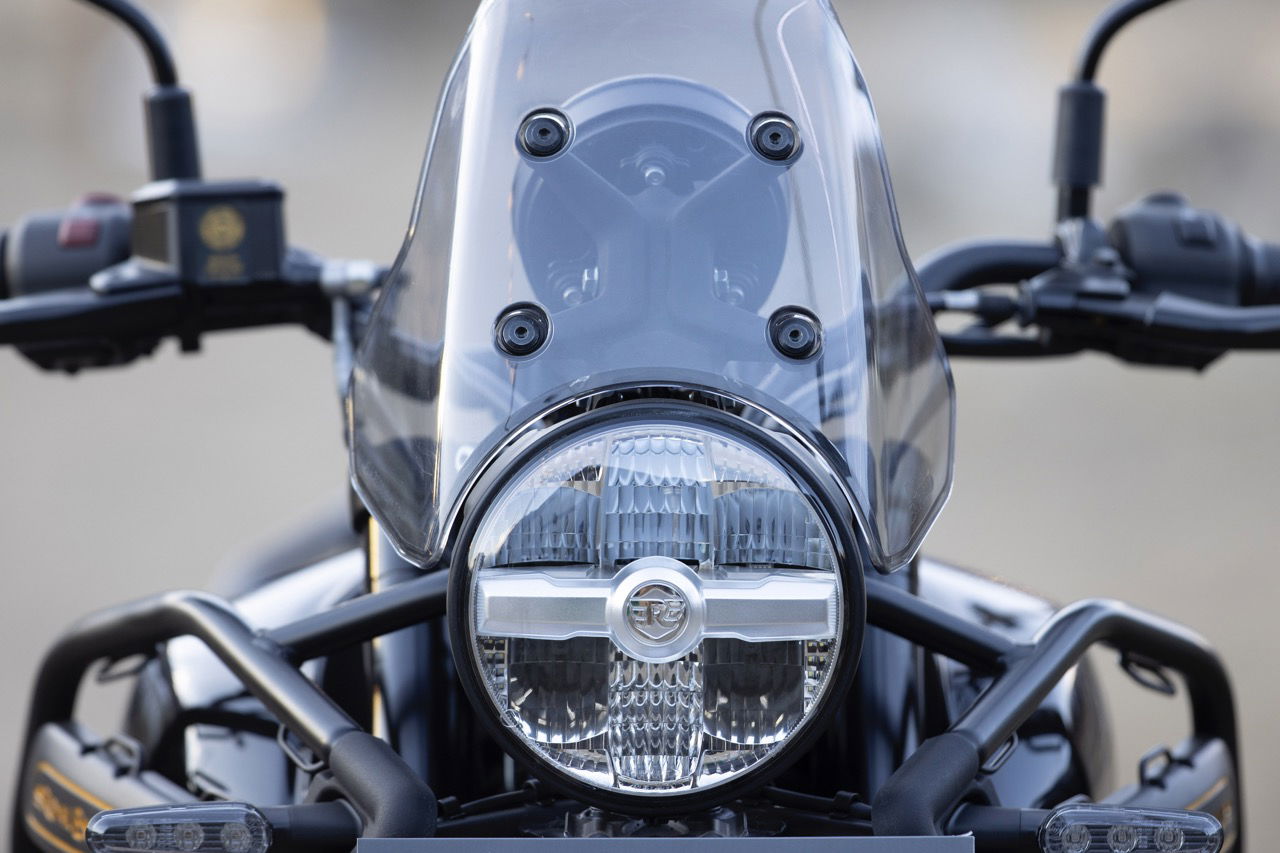
The starting point is the 'Kaza Brown' Himalayan Base, which costs £5,750, representing a rise of just over £1,000 compared to the bike it replaces. The Pass is £5,850 and available in Slate Himalayan Salt or Slate Himalayan Poppy Blue hues.
The Summit meanwhile can be specced in one of three flavours, each of which is priced differently - £6,050 for Hanle Black, £6,250 for Kamet White which also features tubeless tyres and £6,300 for Hanle Black with wheels which can be specced tubeless.
Bikes are expected to be landing in UK and European dealers at some point in Q1 2024.
Review
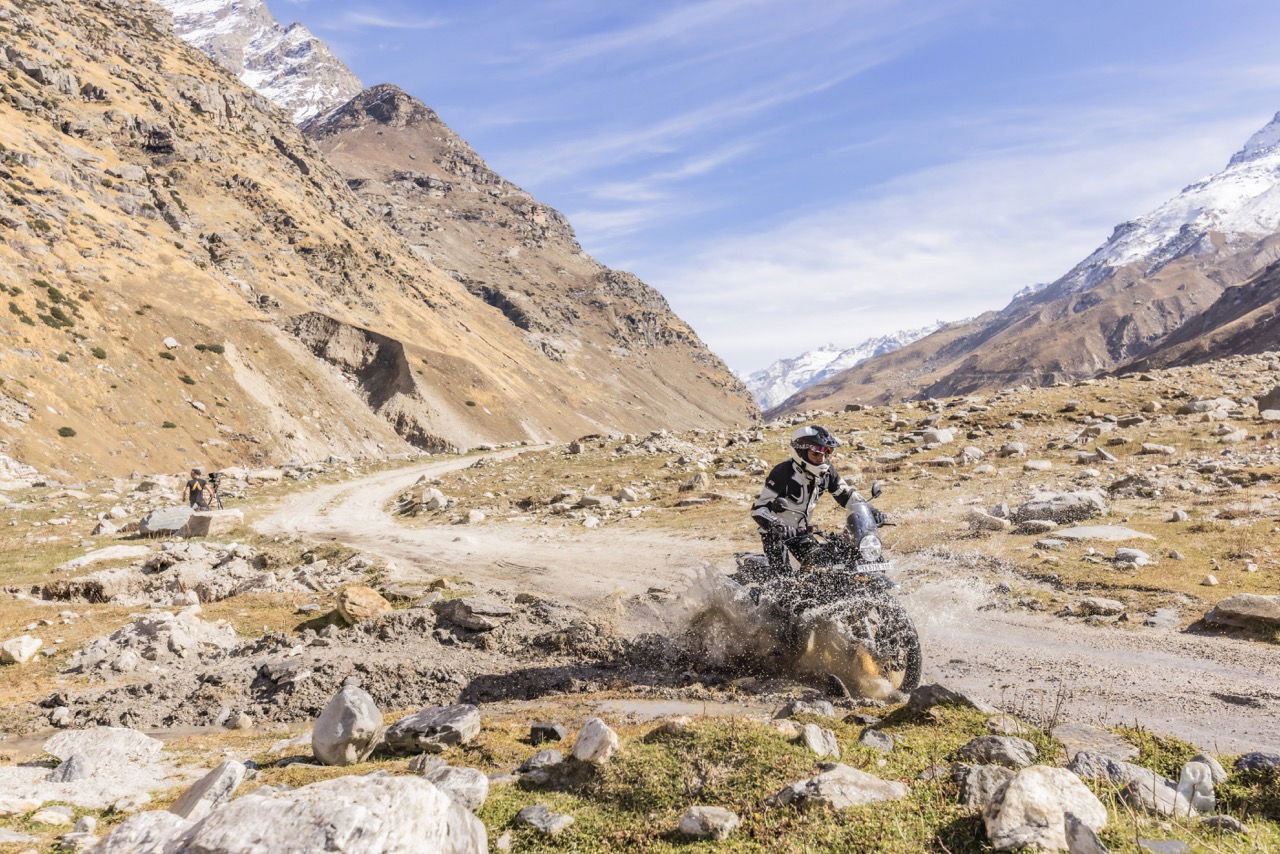
It’s the morning of the ride, 8am. It’s blazing, crisp sunshine and it’s cold - properly cold. It’s my first morning waking up in the Himalayas themselves, and to be honest, it’s a bit of a shock to my system. I’m cowered around my bike as the other groups leave and try and steal a bit of warmth from my rapidly cooling engine. I also take a moment, once my fingers begin working, to have a play with Himmy’s TFT dash.
It’s a new version of the Tripper system we’ve seen on some other RE models and on first impressions, it looks really good. It’s quite straightforward and you only have a couple of different themes to choose from, but compared to the previous versions of the Tripper, it has one BIG bonus; full-screen mapping. You can still opt for turn-by-turn if you like, but Royal Enfield is rightly very proud of including connectivity and mapping to a bike in this sector.

There are only two engine power modes available, Eco, and Performance and you change them via the mode button on the righthand switchcube. You also have a sort of off-road mode, although it's almost hidden away. Once you're in performance mode, you hold the mode button and it disables the ABS to the rear wheel maintaining the ABS to the front. Handy to know considering the road ahead is only 60 per cent asphalt. Once in your desired theme, you can scroll through whether you want MPG, trip info, or music info shown on the screen using the neat little joystick on the opposite handlebar.

Finally, after much waiting around we are given the green light to roll, and we trundle out of the hotel and I get my first taste of riding a motorcycle in India. To put it bluntly, it’s bonkers. There seem to be no rules, driving on the left is more of a suggestion than anything else, and overtaking on the outside on a blind bend is just the done thing. The batshit crazy traffic is actually meaning I can’t focus on what the bike is like to ride though, and it’s only after about an hour in the traffic that we start to get onto some more rural routes.
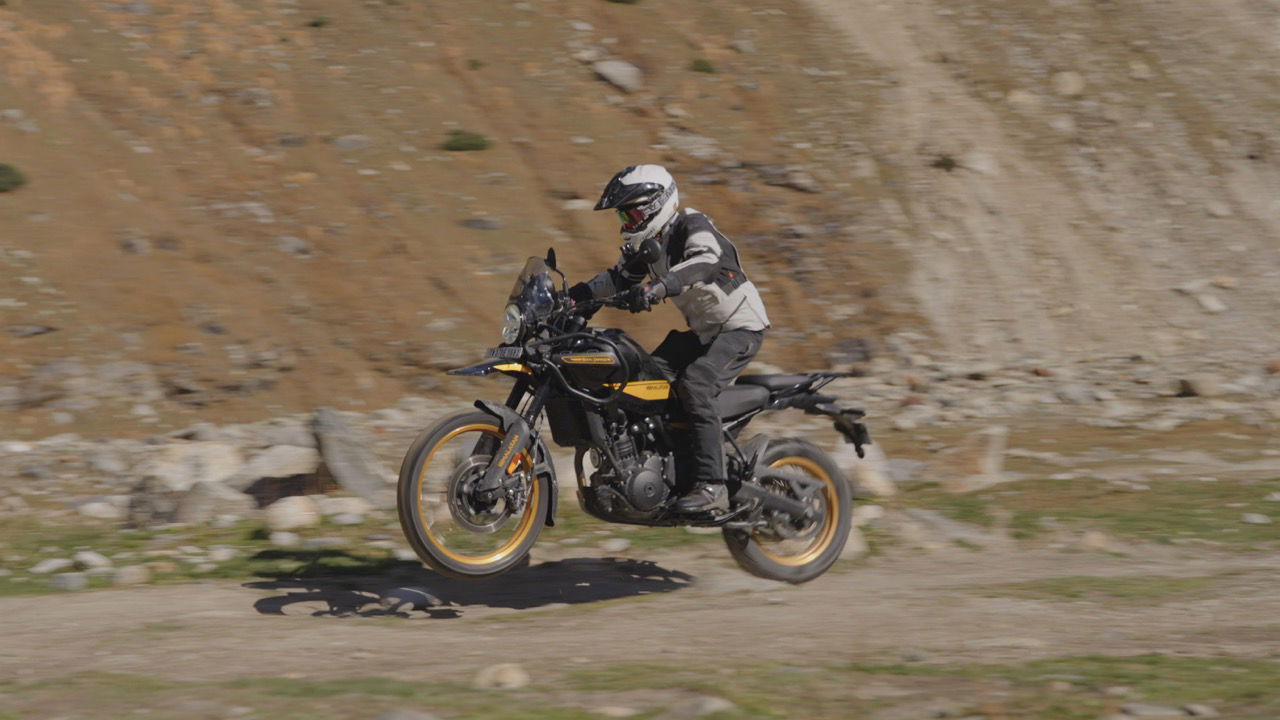
The comfort of the bike is the first thing to come to mind, as at this point I’ve been riding for around an hour and a half and unlike with most other bikes, I don’t have a numb arse yet! The ergonomics feel great, the pegs aren't too high, the bars are wide and when sat down at least leave enough space so the whole bike feels roomy. I’ve not ventured north of 55mph yet, but even when nudging that speed, I’m starting to feel a slight buzz through the bars.
RE has worked hard to smooth out the Sherpa 450 engine, but I can’t help thinking that some slightly heavier-duty rubber dampers on the bars would be a good thing for long motorway miles. In terms of figures, the 452cc single-cylinder engine is good. for 40bhp and 29.5lb ft for torque.
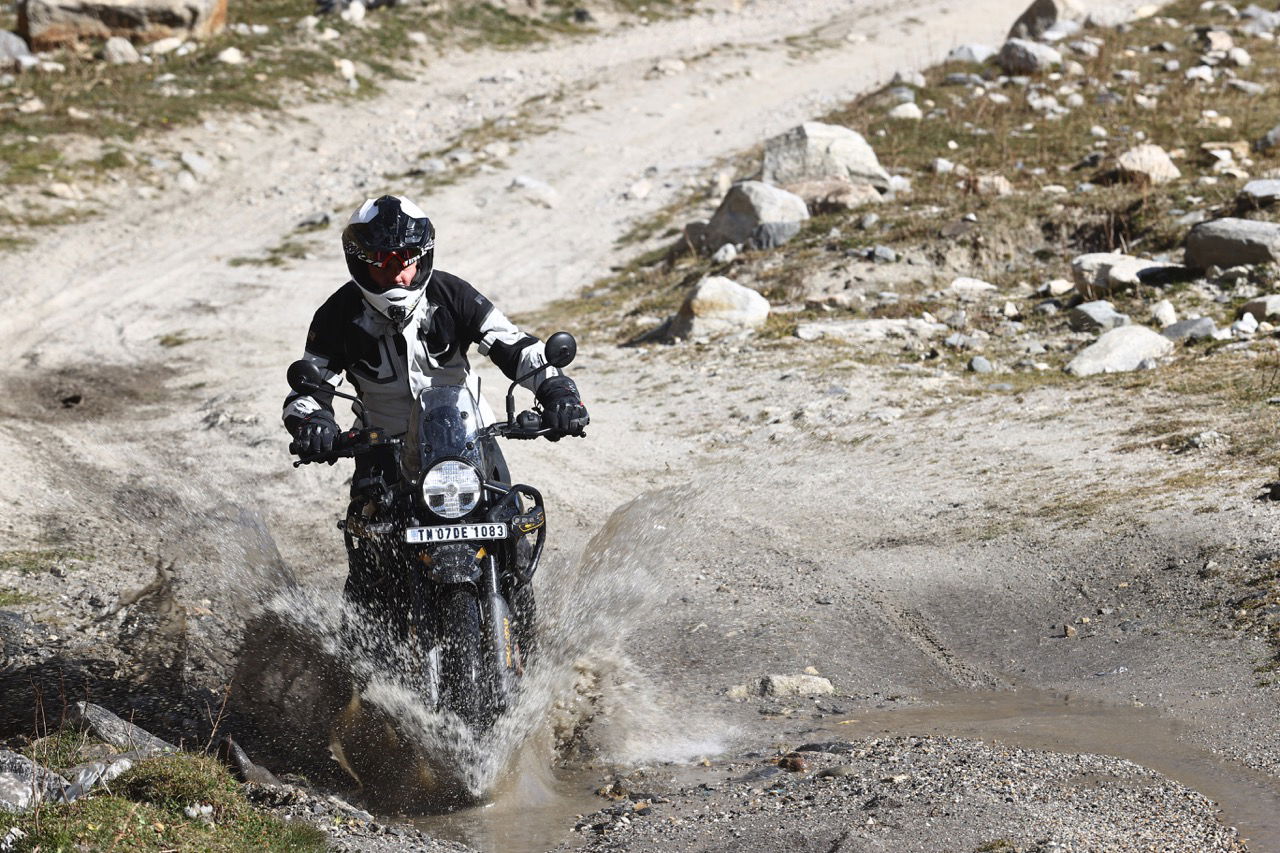
As we push further north the scenery and the roads just keep getting better and better, and with faster, more flowing stretches the new Himmy is showing itself as a decent a-road scratcher. The tyres are a huge surprise to me and unlike the Royal Enfield Hunter 350 that I rode last year, the CEAT hoops on this bike are co-designed by Royal Enfield, and that’s a move that is paying dividends on these twisty roads.

The bike is fitted with Showa Separate Function Forks - Big Piston (SFF-BP) at the front and a Showa shock at the rear with no adjustability other than seven-step preload adjustment. On the road it feels soft and forgiving, but not totally in over its head when you start to push on. There’s a healthy amount of dive under braking but not so much that it totally disassociates you from what the front end of the bike is doing. The lack of adjustability might put some people off, but for my size and weight, it feels okay, although if you are any bigger than me (12 stone/75 kg) you might want to wind in some pre-load, especially if you are carrying luggage.
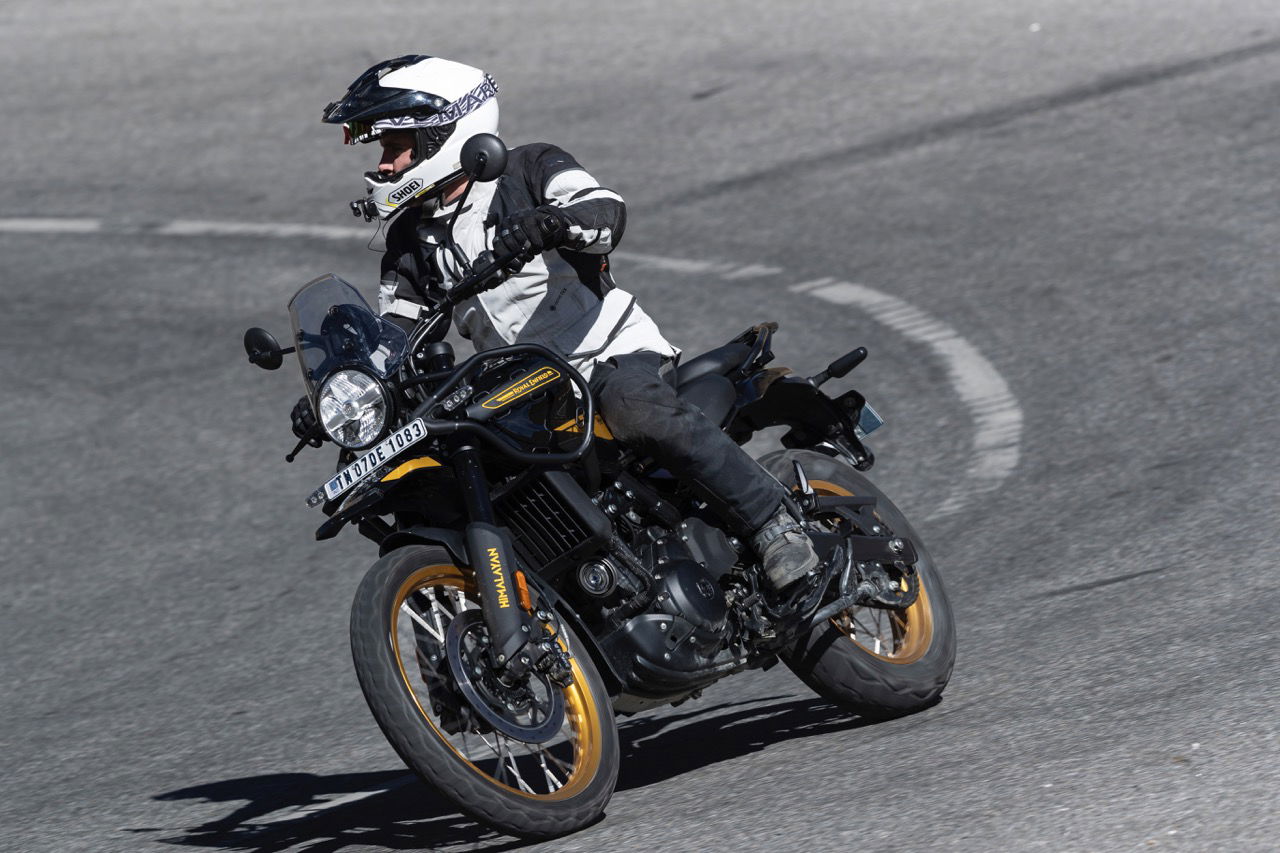
After half a day of road riding, there are a few standout elements of the bike I’m impressed with. The comfort so far is great, the suspension is supple, and the overall handling dynamic is not really what I was expecting from the new Himalayan. What I’m not totally sold on yet is the engine. It is supposed to have around double the power of the previous generation bike, and while it's been a while since I’ve ridden the old Himalayan, to me this doesn’t feel like twice as much power.
There is a caveat to this criticism though, and that’s the altitude we are riding at. I’ve only ever ridden 411cc Himalayan not much more than sea level. Up here, sometimes above 10,000 feet, the air has a very different density and I think it’s massively sapping the power. Royal Enfield is planning a UK launch event next year, that is going to be a much more realistic impression of how the Sherpa 450 performs.
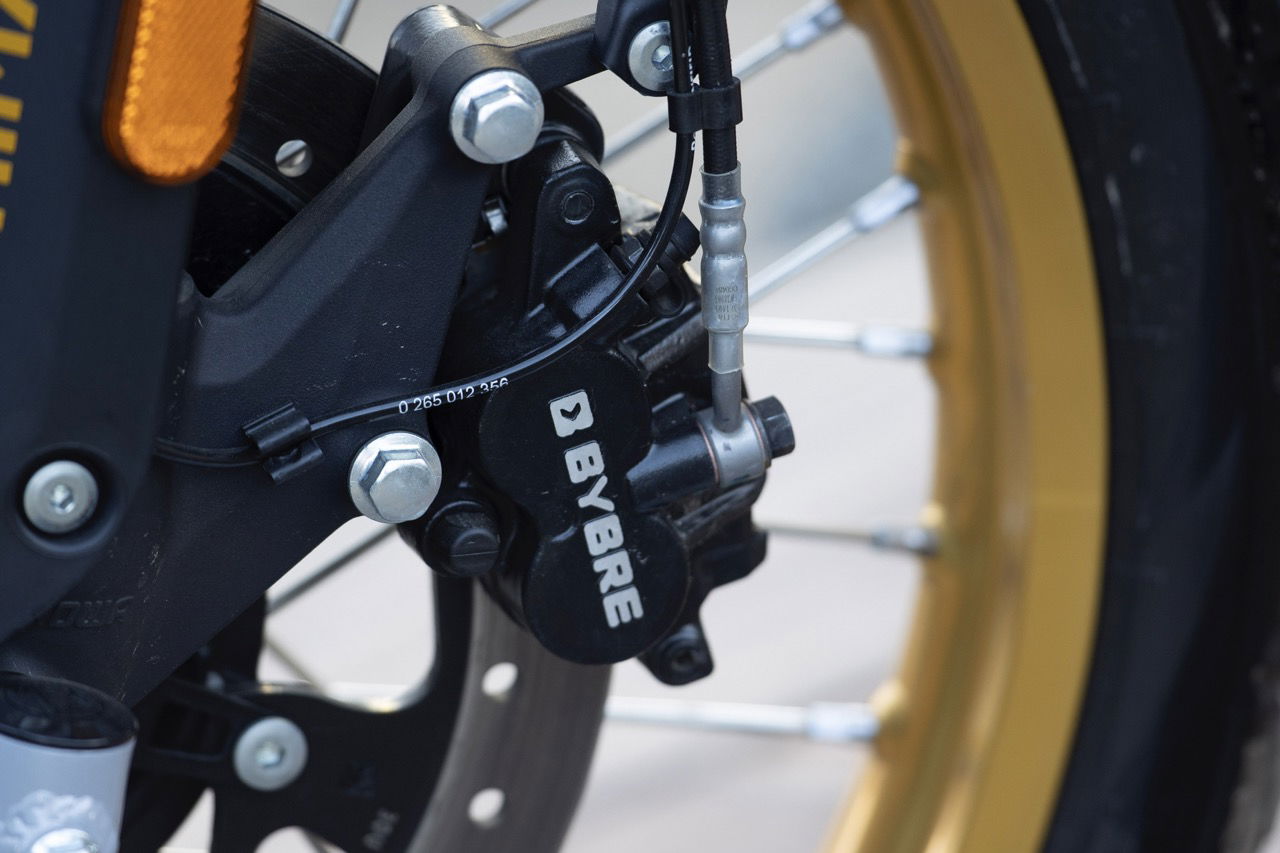
Another area of the bike that is performing surprisingly well is the brakes. It’s shod with Bybre stoppers front and rear, with an axially-mounted two-piston caliper and 320mm disc at the front, and a single-piston caliper and 270mm item at the rear. Two pistons up front on a bike nudging 200kg isn’t much, and I can name countless bikes of similar capacity and weight that have two discs and four-pot calipers looking after the front end. The Himalayan doesn’t seem to miss the extra hardware though. You have to work the lever fairly hard, but there is plenty of power on offer when you do, if not the most premium lever feel. The rear brake too is great - super sharp and, with the two-channel ABS turned off to the rear, will have you sliding the back into hairpin bends with little more than a wiggle of your big toe.

With the roads in this area of India flip-flopping from Tarmac to dirt to rubble to mud, we have already ridden our fair share of rough stuff on the new bike. Now though, at the halfway point we get our first proper taste of it on a four-mile stretch that runs along and above the Chenab River. It’s a good job this isn’t my first taste of the Himmy off-road, as the road is a treacherous balcony road seemingly clinging to a cliff and sometimes with rock walls looming ominously overhead. The Himalayan though is taking it all in its stride.
That softly sprung suspension gives you a lovely feeling of control over the bike, and the 200mm of suspension travel means I’m only troubling the bump stops on the heaviest of hits. It’s not what you’d call a featherweight of a bike, weighing in at 196kg wet, but whether you are on or off-road, it never really feels like an overweight frump. It’s the kind of bike that makes riding off-road easy, and means you can just focus up the road and let the bike do its thing beneath you. As long as you stay loose and relaxed, the bike will pretty much take care of the rest.
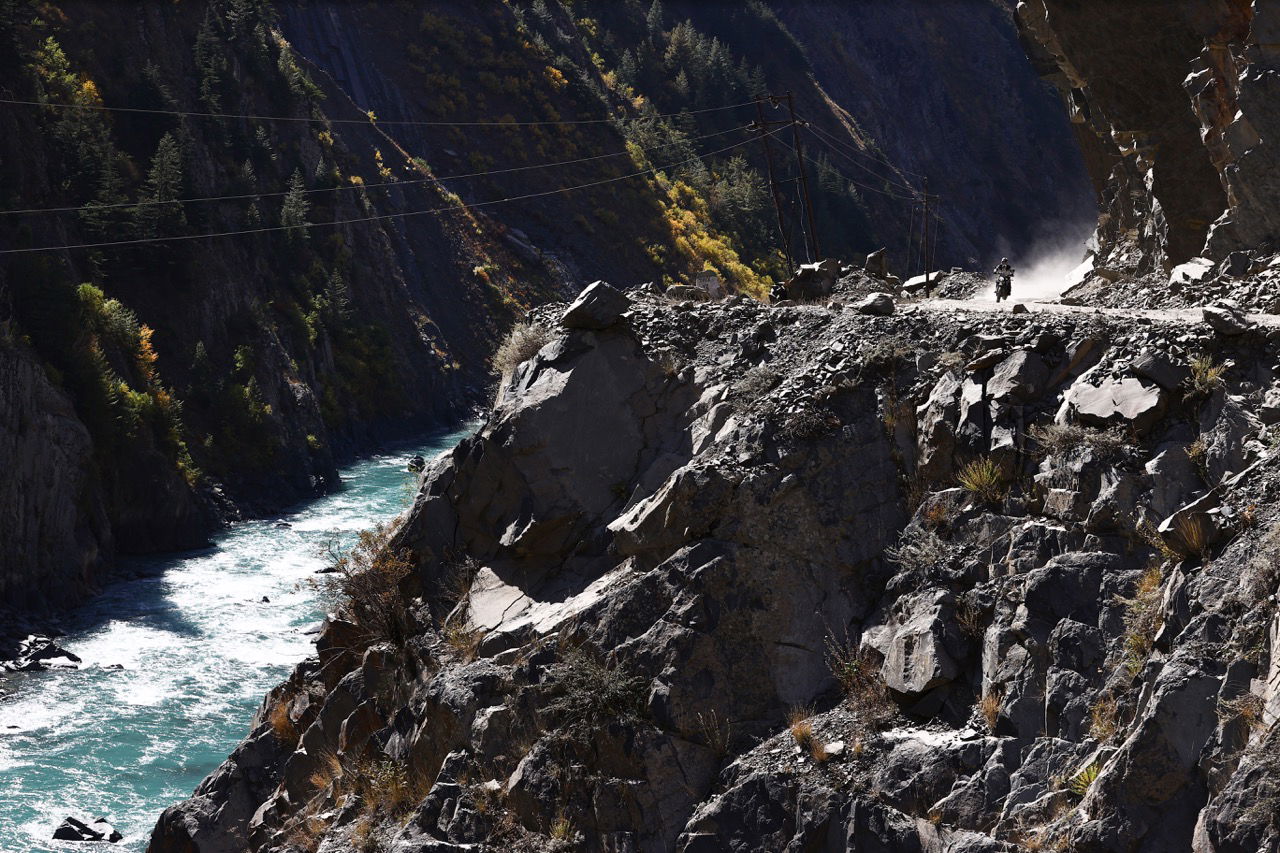
After running the road in one direction I spin around and head back to the start and now as I have a vague idea of where it is going, I’m able to press on a bit more and not ride like every blind bend is going to end with me falling 200 meteres into the river below. At the very end of the road, there is a mega little stretch of just under a mile that opens out to allow me to wring the neck of the bike on the dirt. It takes a little time to get up to speed, but before I know it the Himalayan is bounding along this rock-strewn stretch at impressive speed and with decent levels of composure.
Even hitting a fairly sizable rock at 55 mph does little to upset the bike, and it begins to feel like the faster you go this thing, the better it becomes. It’s also dawned on me that I’ve been thraiping this bike to within an inch of its life pretty much every mile of this press ride so far. It’s been flat to the stop most of the day, bounced into off-road sections at speed, and unceremoniously clattered out of them at the other end. I’m not sure other bikes in the sector could take quite this amount of abuse.
2024 Royal Enfield Himalayan verdict
After two fairly solid days of riding the new Himalayan, I’m overall impressed with what Royal Enfield has done for this new model. The on and off-road ability has been boosted significantly over the previous model, and with more power and usable torque (which will be better felt at sea level) the new bike should be a big hit with existing and new owners.
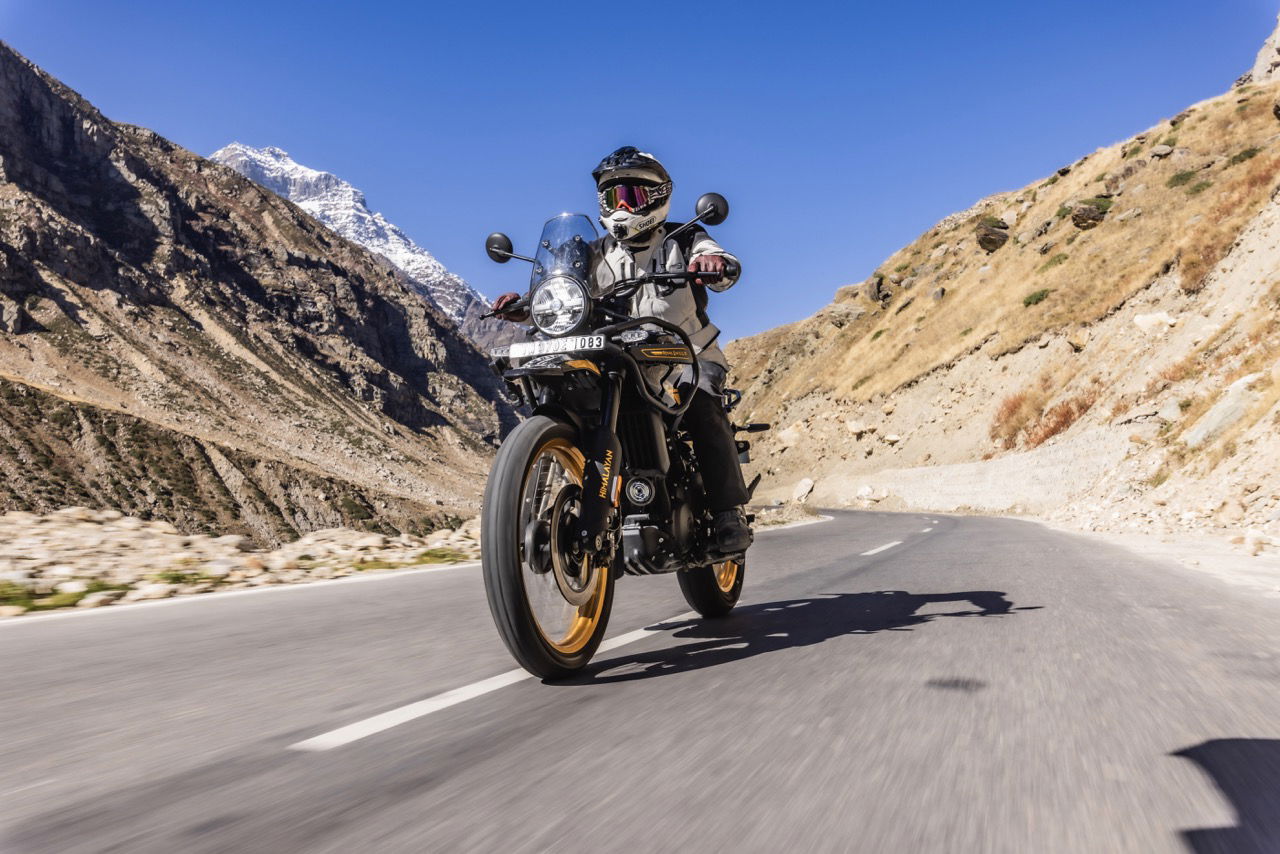
There are a couple of caveats to this though, the first being the price. Should this be a £5,800 or £6,300 bike, for what you are getting, it’s very good value. Should that price rise to £7,000 or £7,500, it starts to look less of a good deal. There aren’t many true competitors to the new Himalayan, but the BMW G310 GS (£4,995), KTM 390 Adventure (TBC), CFMoto 450MT (also TBC) and the new Triumph Scrambler 400 X (£5,595) could all be considered. As long as the new Himalayan comes in somewhere around there, I think its got just the right ingredients to succeed.
The Royal Enfield Himalayan 450 is undoubtedly one of the most anticipated bikes of recent years, with that anticipation fuelled by a number of image and stats leaks over the past couple of years or so. Finally, though, we have official information from Royal Enfield itself.
This is an updated page originally published 3rd November 2023, the original page can be viewed below.
2024 Royal Enfield Himalayan 450 takes the Indian adventurer to the next level
Launching for 2024, the Royal Enfield Himalayan 450 is built around an all-new Sherpa motor, displacing 452cc, and producing 40bhp and 29.5lb ft. It is also liquid-cooled, in a DOHC layout, and its single cylinder has four valves. Operation of the engine is conducted via a ride-by-wire throttle, and the motor is fed by a 17-litre fuel tank.
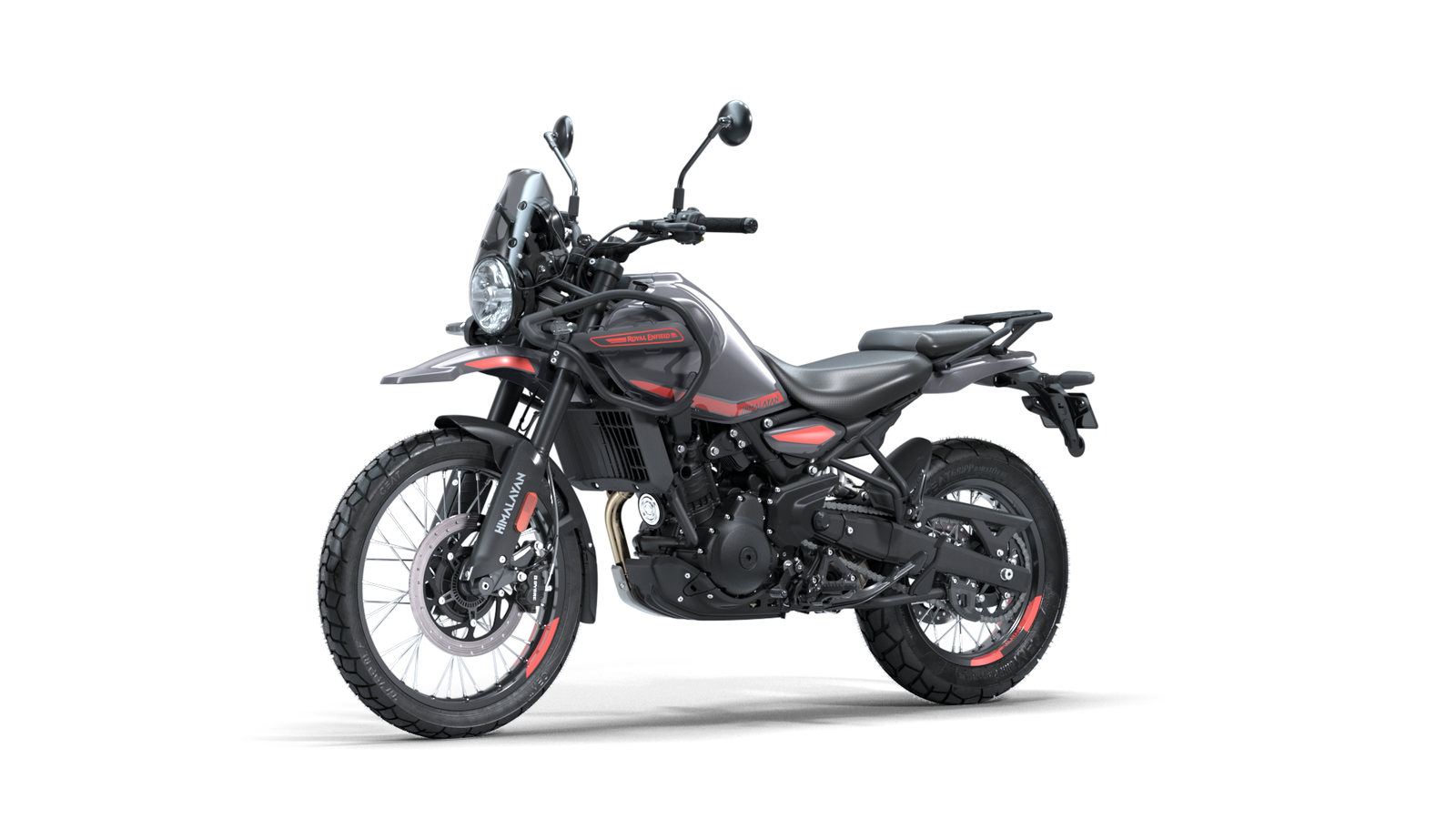
The motorcycle's frame is a steel twin spar unit, suspended by a 43mm inverted cartridge-type front fork and a single rear linkage-type shock.
Rolling on a 21-inch front wheel, and 17-inch rear, the Himalayan 450 has 200mm of wheel travel at both ends, with the ride height set at 230mm.
There are two seat options, and both are adjustable. The standard seat option is adjustable between 825mm and 845mm, while the low seat option is adjustable between 805mm and 825mm.
Dry, the bike weighs in at 181kg; adding fuel and oil brings that up to 196kg, and the level of the fuel can be monitored via the new TFT dashboard, four inches in diameter and round in shape.
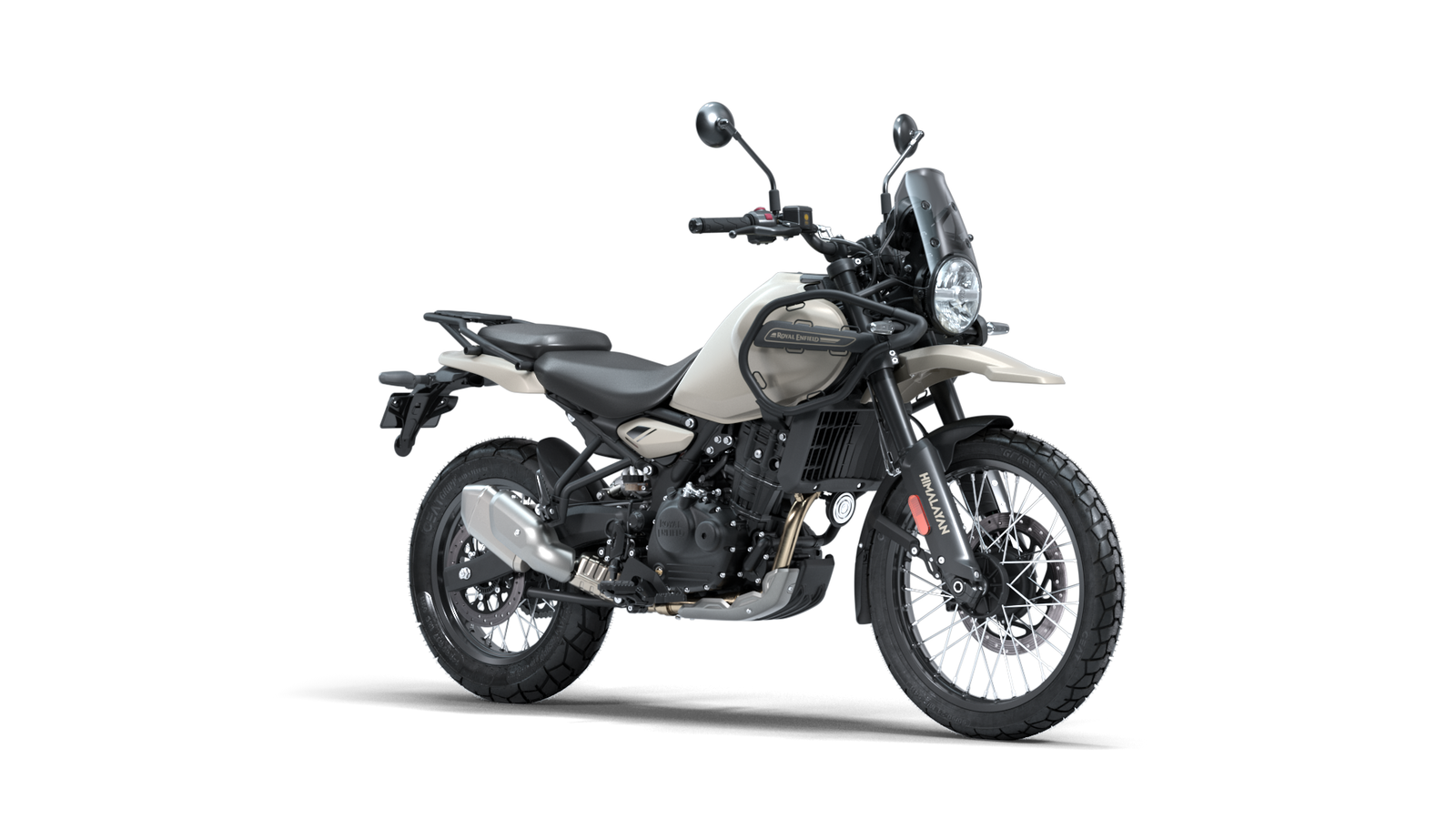
Amenities include LED lighting and a USB-C socket, while the new joystick-controlled switchgear can be used to select different riding modes and toggle the bike’s ABS.
A number of accessories are available, of course, including an adventure screen; headlight grill; touring mirrors; a black rally-style bar pad; silver radiator guard; engine guards; rally-style crash protection; and a top box and pannier option with mounting structures for each.
The 2024 Royal Enfield Himalayan 450 will be available in five colours: ‘Hanle Black’, ‘Kamet White’, ‘Slate Himalayan Salt’, ‘Slate Poppy Blue’, and ‘Kaza Brown’.


